My Favourite Pieces: Clare Corrigan mixes concert lanyards with Native American jewellery
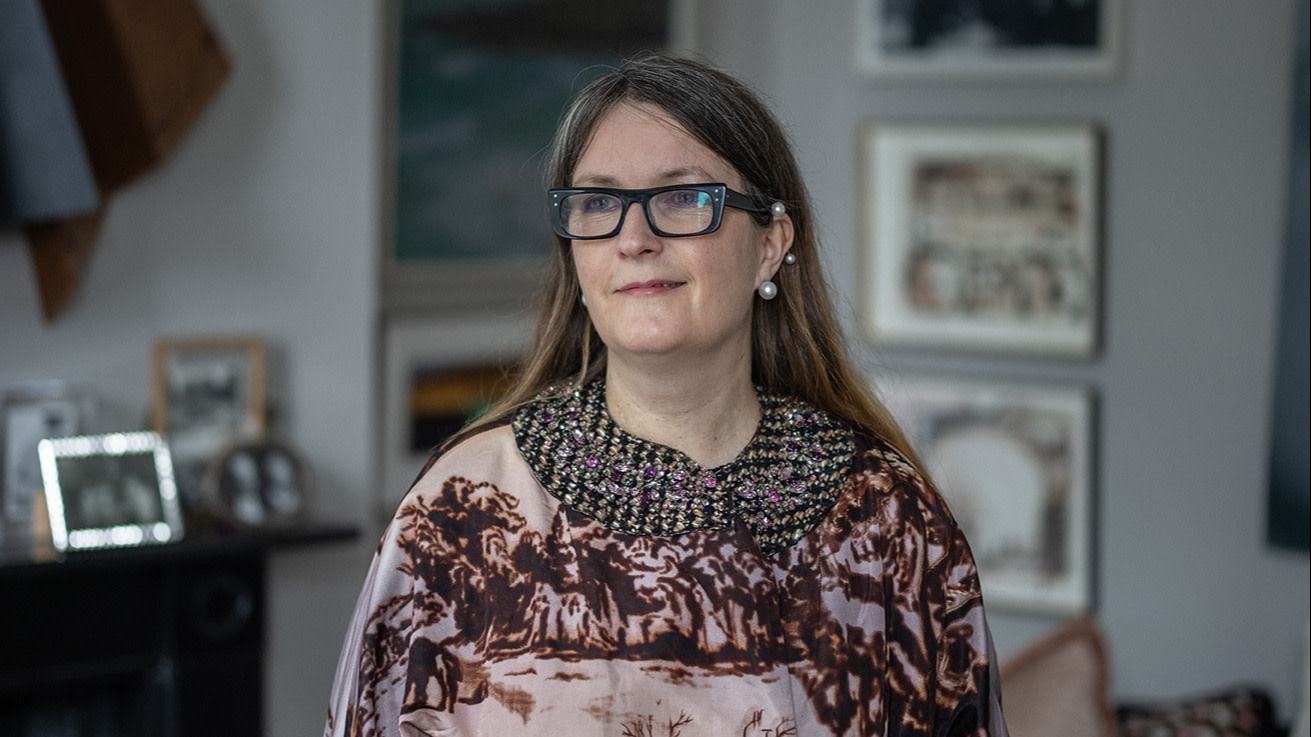
Roula Khalaf, Editor of the FT, selects her favourite stories in this weekly newsletter.
When Clare Corrigan was working as the senior ready-to-wear designer for Karl Lagerfeld in Paris in the mid-1990s, he would let her return to her home base of London with the words: “Bring something back that’s going to freak me out.” He had picked up on her love for jewellery and her flair for ornamentation. But it was not until a few years later, during her time working with Marc Jacobs, that she got the opportunity to design jewellery.
Her 12-year collaboration with the American fashion designer included a move to Louis Vuitton — where Jacobs was creative director — to take up a job as LV’s costume jewellery (bijoux fantaisie) design director.
Since then, Corrigan has worked as a consultant for an illustrious roll-call of brands, including Tiffany & Co.
“Even though I am called a freelance consultant, I always go in full time,” she says. “It’s always that complete immersion.”
Over the years, she has built up an extraordinary and eclectic collection of jewellery — from shell brooches bought for $10 at New York flea markets to Georgian diamond rings. She says: “I always love fabrications and I always love humble materials and I always love things that are given an opulence through the way they are treated.”
Native American bangles, silver and abalone, 1930s and 1977
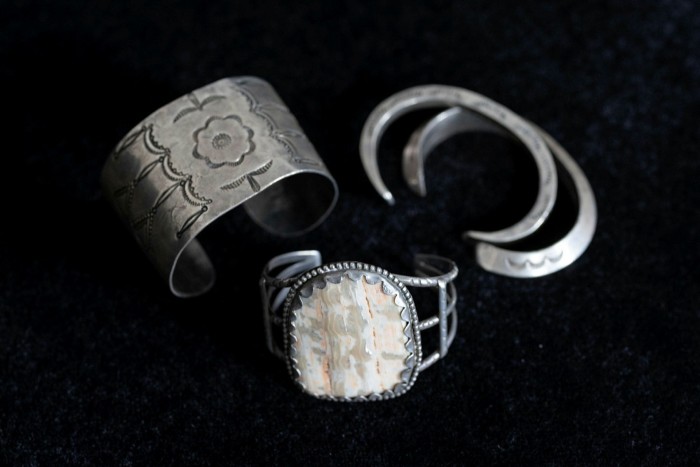
“I think there is something very majestic in what you see in Native American craftsmanship,” says Corrigan. Her love affair with this jewellery began in 2017 at a Georgia O’Keeffe exhibition in Brooklyn that included O’Keeffe’s own jewellery from New Mexico.
Twelve trips to Santa Fe and two internships at the Shiprock Santa Fe gallery (where these bangles were sourced), followed. “It’s called the land of enchantment and it literally hooks you immediately,” she says. “I wanted to immerse myself in the culture and learn and study about the metalsmithing and the artistry of the Native American craftsmanship.”
The most striking of the bangles is from the Navajo tribe and was made in Taos in 1977. At its centre is a large piece of abalone, but not of the familiar blue/green iridescence. “They take the back off the shell and leave it in the sun to bleach and it becomes this beautiful pale colour,” says Corrigan.
The two narrow bangles are also Navajo but earlier, from the 1930s, made in the same period as the wider Pueblo cuff with its floral motif.
“They are made from ingot silver that is melted down. You can often see the texture of the hammering within the metal and that is how you can tell they are early Depression-era pieces,” she says. All have the distinctive and naive floral and symbolic motifs particular to each tribe.
David Bowie concert lanyard, stamped aluminium, 1974
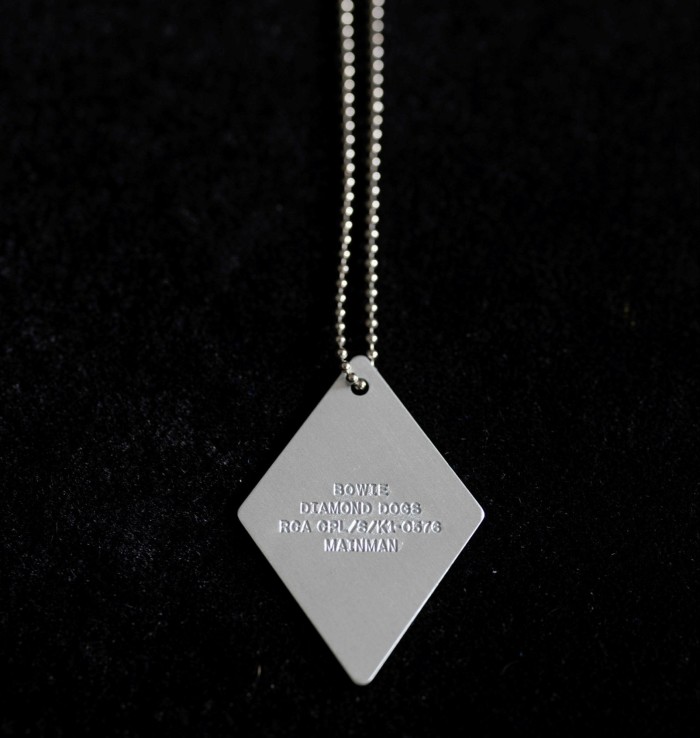
When a dealer in pop memorabilia contacted Corrigan she was able to resist his offer of a jacket that had once belonged to English musician Marc Bolan. But she could not resist this piece of David Bowie history.
These backstage lanyards were not valued much at the time, but jewellery-wise they have been quite influential.
“I don’t think I have seen two of these; it is quite amazing it survived,” she says. “I love the fact that it is complete pop ephemera. This was a disposable item but it is so potent now when you think of the time.”
She describes Bowie as her “real north star, who informs everything I do creatively. The music, the costuming, the videos. He was also such a visionary both culturally and ethically.”
Necklace and cuff, Junya Watanabe, chrome and leather, 2019
“I bought these in Dover Street Market in London,” Corrigan recalls.
“It is very unusual for me to buy modern jewellery but I just felt that this could be slotted in next to Hermès, or just a good piece for layering. What I like is it could be punk or it could be really early Lanvin. It’s that early modernism that is very clean, functional and futuristic, which I love.”
She has seen this necklace “on people you wouldn’t expect to be wearing it and it looks really chic. There is a lovely proportion to it. It sits well.”
Necklace, rock crystal, gold-plated brass, leather, Louis Vuitton, 2011
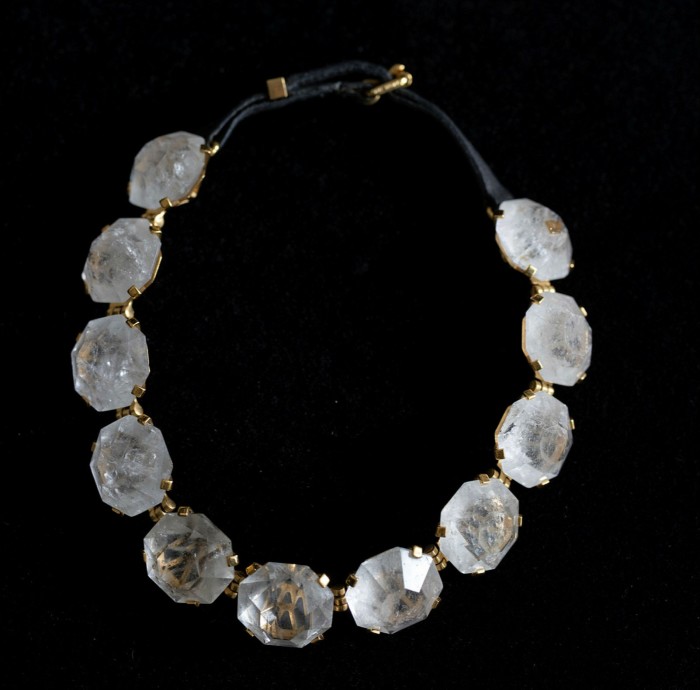
This necklace was designed by Corrigan for Louis Vuitton. “I am not a bench-trained jeweller, but I have always learnt alongside the most incredible ateliers in Paris and Florence. The relationships I built with the maquettistes, the technicians, were so important because they were the problem solvers.”
The result is a beautiful piece of engineering. “The idea was of the oversized strass in crystal, but reimagined in rock crystal with habitations. It’s only chic if there are inclusions in the crystal.”
She still wears it a lot. “It goes with anything. I wear my [Andrew] Grima all day long, I always wear my pearls, even if I am taking my dog for a walk. I think that is how you should wear jewellery.”
Necklace, chromed metal, Bakelite, lacquer, Jakob Bengel, 1930s
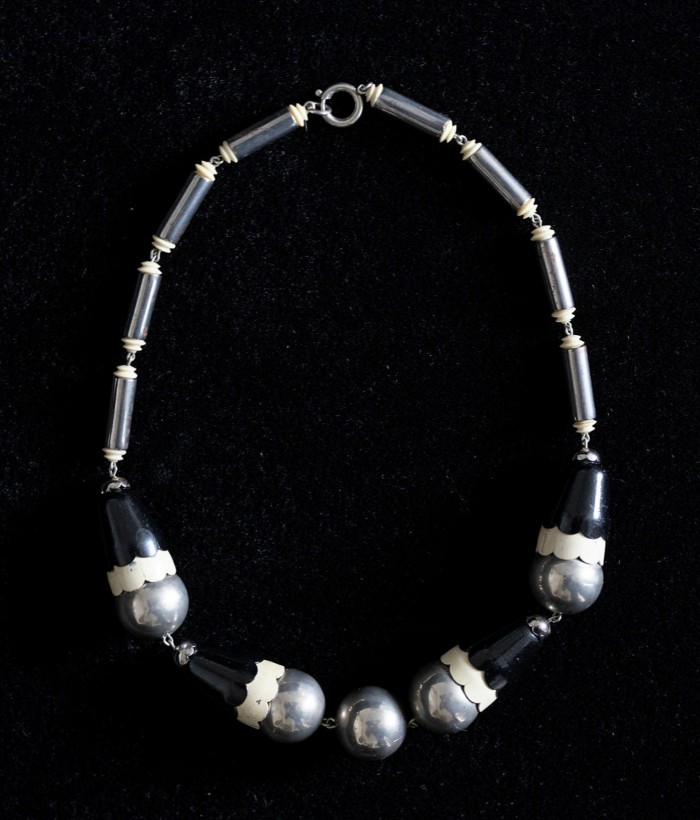
This necklace has a timeless quality that Corrigan is drawn to. “I found it in Vienna. It recalls a lot of pieces that were being made at the Bauhaus, a huge inspiration of mine. It still looks extraordinary in its modernity and also its prettiness.” For Corrigan, the necklace represents another strong connection to the past in its story of refugees and, she believes, of hope.
“For me it is quite potent because it is very much about refugees and movements of skillsets at a time when exactly what is happening now is that there are huge cultures of skilled people who are on the move and are taking their influence to other countries.”
She references Bauhaus design luminaries such as goldsmith Naum Slutzky and textile artist Anni Albers, who both fled Germany after the Nazis closed the Bauhaus school in 1933 — Slutzky to the UK and Albers to the US. Both continued teaching and both continued to inspire generations of designers. “It makes me hopeful for the future,” she says.
Ring, gold, diamonds, boulder opal, Andrew Grima, 1974
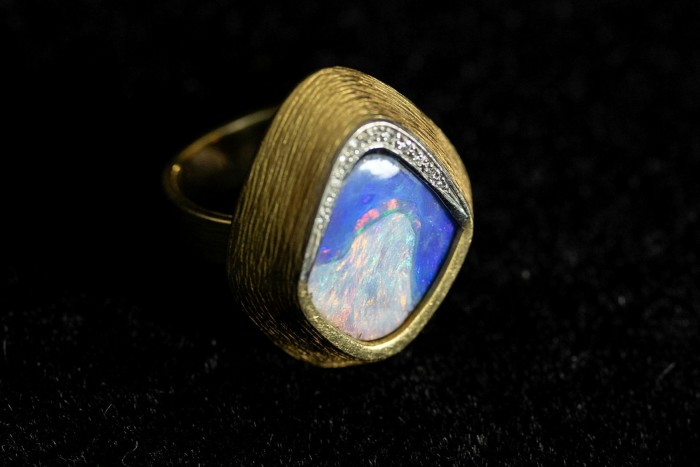
Corrigan says that British-Italian designer Andrew Grima, often referred to as the father of modern jewellery, became a talisman for her “gang of friends”. They included Marc Jacobs who wore and collected his pieces. For Corrigan, Grima also became a mentor and an inspiration when she was starting out designing jewellery, following a serendipitous meeting.
“It was 2006 and I was walking along the Burlington Arcade in London and stopped at the window of Peter Edwards’s shop to admire a pendant. I went inside to ask if it was by Andrew Grima and he said it was and if I returned in 15 minutes I would be able to meet him in person.”
The opal ring was a gift from Grima. “The thing that is so extraordinary about it is that it looks like it’s from the Starship Enterprise but it actually sits so beautifully on the hand and every proportion — the shank, the way the stone is set — is all so beautifully resolved and that is such a Grima hallmark.”
Bangle, wood, lacquer, Elsa Peretti for Tiffany & Co, 1990s
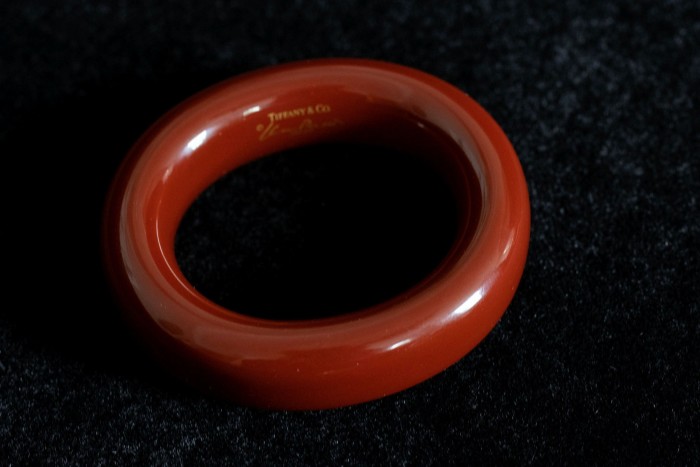
“I always love lacquer, there is a lightness and a modernity to it,” says Corrigan. “I love this kind of chestnut red, it’s quite an [Walter] Albini colour, very New York, and the whole thing sits beautifully on the wrist. It was made at the time of disco and also at the time of craft. So it’s this amazing intersection that she created.”
It is a piece of jewellery that Corrigan wears a lot. “I wear it with my Grima and my Georgian diamond rings, I just kind of like that as a mix. I just think a cuff is a good vehicle for elevating an outfit. You can have something in shell, or a lacquer, or rock crystal.”
Comments